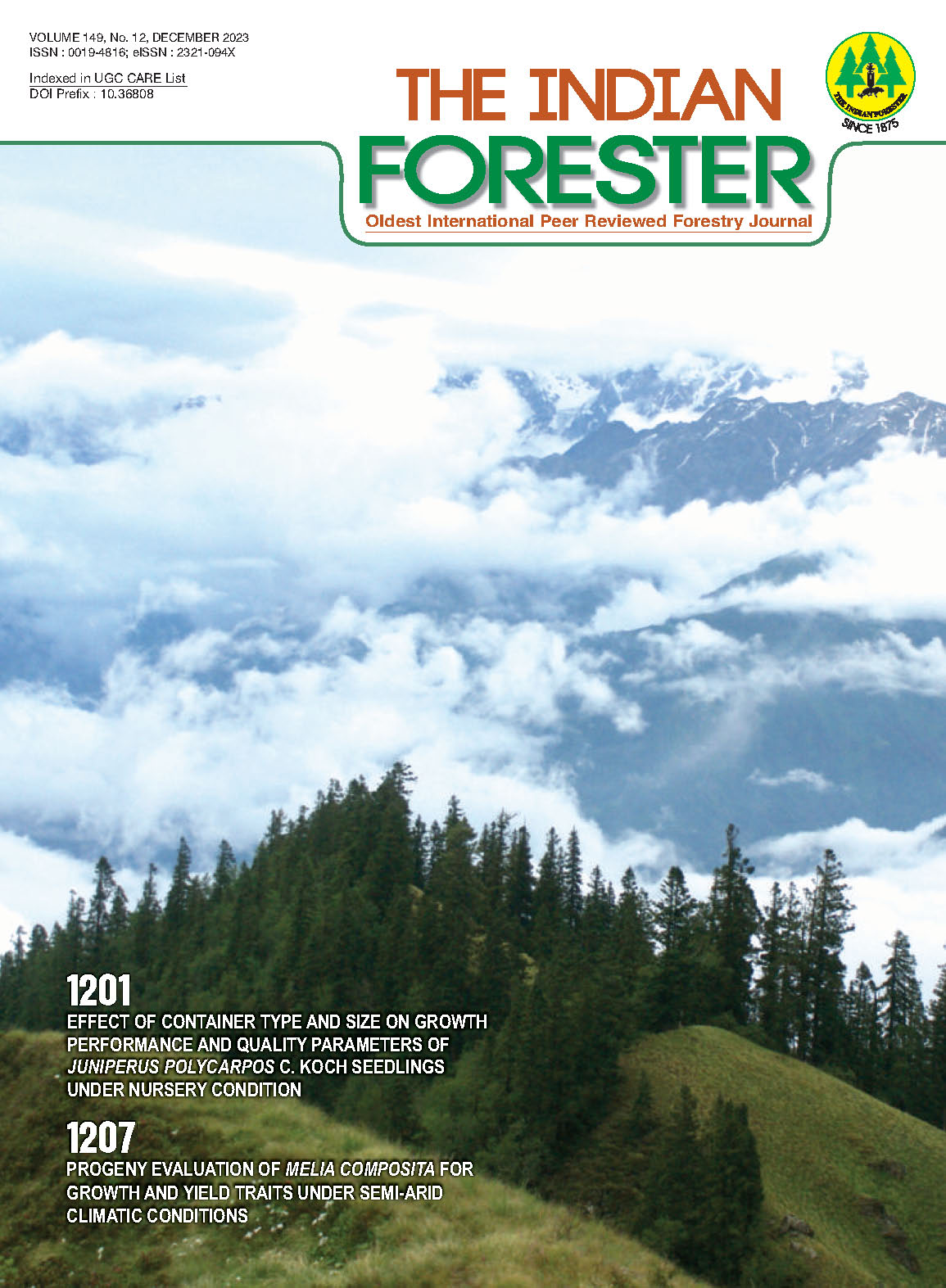Weeds Infestation and Survivability of Mulberry Cuttings in Nursery
DOI:
https://doi.org/10.36808/if/2023/v149i12/169570Keywords:
Cuttings, Infestation, Nursery, Saplings, Weeds, Survivability.Abstract
An experiment was conducted at Silkworm Seed Production Centre (SSPC), Udhampur J&K, UT during 2020-21 to assess the survivability of two different mulberry varieties and kinds of weeds infestation in mulberry nurseries and placed them under respective families. During the present studies, it was found that two weeds infestation were predominant in the mulberry nursery viz., Cynodon dactylon L. and Parthenium hysterophrus L.. Further, the comparative mean data showed highest length of the saplings in S-1635 (1.765 m) and the numbers of cuttings survived was also found highest in the S-1635 saplings.References
Chandramohan S.R., Charudattan R.M., Sonoda and Singh M. (2002). Field evaluation of a fungal pathogen mixture for the control of seven weed grasses. Weed Science, 50: 204-213.
Dasari J.R., Jayaram H., Selvaraj N.G. and Sivaprasad V. (2018). Mulberry nursery enterprise in Karnataka and Andhra Pradesh –an economic study. International Journal of Agriculture Sciences, 10(17): 7040-7043.
Jaiswal K.R., Goel R., Kumar K. and Gangwar (2006). Effect of different soil mulches on mulberry leaf yield and leaf moisture content. In: Abstr. of NatI. Semi. on Soil Health and Water Management for Sustainable Sericulture, Regional Sericultural Research Station, Kodathi, Bangalore, India, p.27-28.
Kaul M.K. (1986). Weed flora of Kashmir Valley. Scientific Publishers, Jodhpur, India.
Muniyappa T.V. and Shivakumar H.R. (2000). Crop weed competition in mulberry. In: Proceedings of the National Seminar on Tropical Sericulture, 1999, Department of Sericulture, University of Agricultural Sciences, GKVK, Bangalore, India, 28-30 December 1999, 1: 76-78.
Panneerselvam S. and Lourduraj C.A. (2000). Weed spectrum and effect of crop weed competition in soybean [Glycine max (L.) Merrill] – a review. Agriculture. Review, 21: 121-124.
Patil P.S., Ahirrao Y.A., Dusing Y.A., Aher V.P. and Patil D.A. (2010). Role of crop weeds in traditional medicines in Buldhana district (Maharastra). Life sciences leaflet., 10: 261-272.
Prasad G.V., Mogili T., Raghupathi M., Satyanarayana Raju, Ch. and Qadri S.M.H. (2012). Sericulture Field Guide, pp.20-32.
Sharma B.M. and Kachroo P. (1981). Flora of Jammu and Plants of Neighbourhood. Bishen Singh, Mahendra Pal Singh, Dehradun.
Shivakumar H.R., Prthibha N.C. and Muniyappa T.V. (1994). Effect of chemical weed control on nutrient uptake by common mulberry (Morus australis) and associated weeds. Indian Journal of Agronomy., 9 (2): 277-281.
Sikdar A. K., Krishnaswami S. and Bharathi A. (1981). Effects of weed competition on growth and leaf-yield of mulberry. Indian Journal of Sericulture, 20(1): 7-10.
Srinivasan E.B.M.R., Subbaswamy A.K., Sikdar A., Bharathi and Jolly M.S. (1987). Effects of weed density value of mulberry (Morus indica L.). Indian Journal of Sericulture, 26(2): 72-75.
Swami A. and Gupta B.K. (1998). Flora of Udhampur. Bishen Singh, Mahendra Pal Singh, Dehradun.
Downloads
Downloads
Published
How to Cite
Issue
Section
License
Unless otherwise stated, copyright or similar rights in all materials presented on the site, including graphical images, are owned by Indian Forester.





